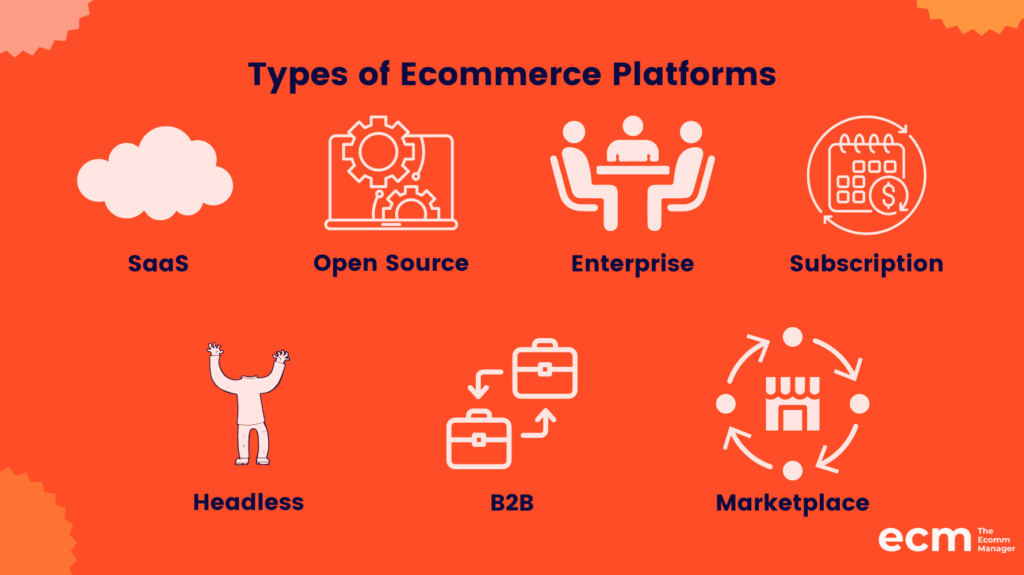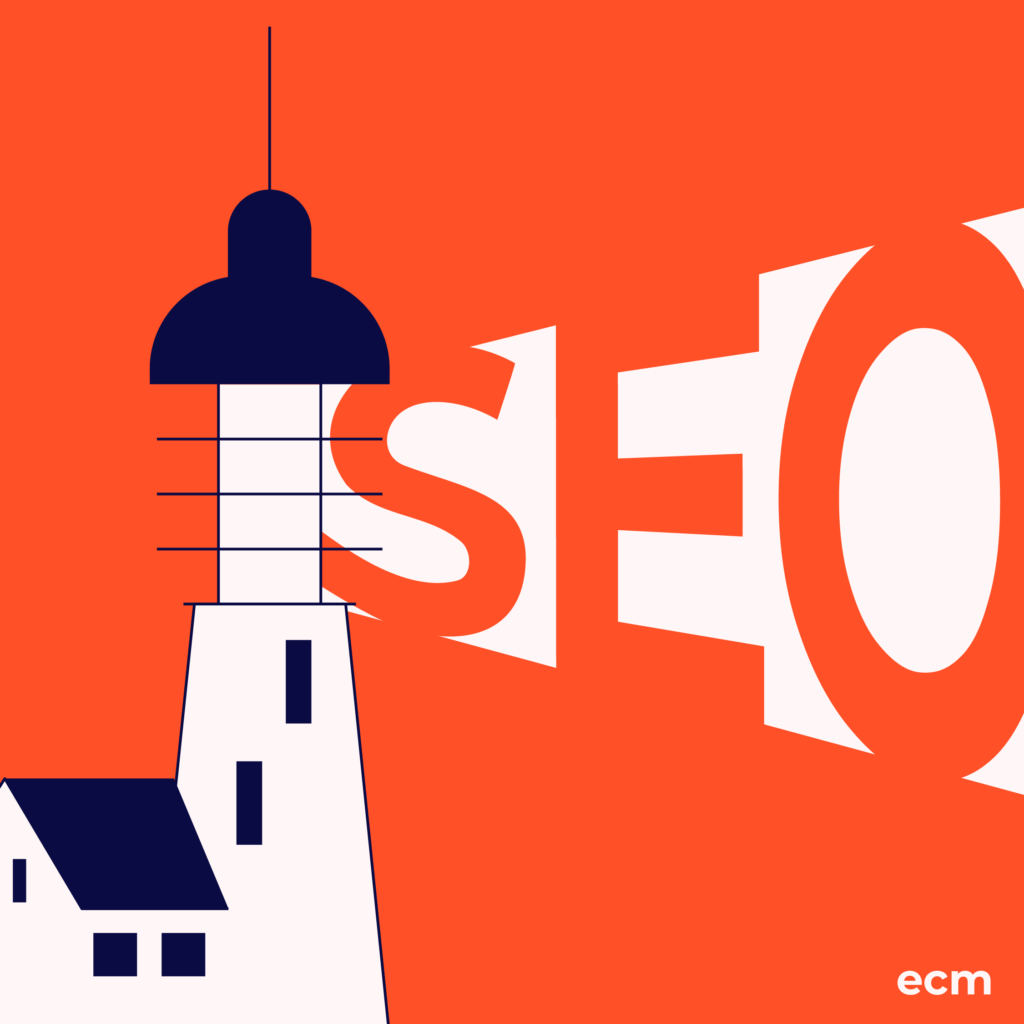Dream Shop Toolkit: Choosing the right ecommerce platform is crucial for laying a solid foundation for your online store, factoring in your business size, customer buying habits, and design needs.
Speed = Success: Site speed directly impacts user experience and SEO rankings, with faster sites enjoying better visibility and higher conversion rates, emphasizing the need for a platform that supports speed optimization.
Seamless Shopping Everywhere: Multichannel selling integrates your ecommerce platform with multiple sales channels like Amazon and Instagram, crucial for businesses aiming to sell wherever their customers are.
Safety First: Security is paramount for earning customer trust and protecting sensitive information, highlighting the need for ecommerce platforms to offer robust security features like SSL certificates and fraud prevention.
Personal Touch: Personalization features in ecommerce platforms can significantly enhance the customer shopping experience by leveraging data to offer tailored product recommendations and campaigns.
So, you’re either here because you hate your current ecommerce platform, or because you’re ready to start your ecommerce journey with the right platform. Either way, you got the right place.
In this big ol’ guide, we’ll lay out exactly how to choose an ecommerce platform for whatever type of business you are running.
By 2027, ecommerce sales are projected to account for nearly 23% of all retail sales, according to Statista. That’s right, nearly a quarter of all sales globally will be online.
Accelerated by the pandemic, this trend is only going upward.
So how do you choose the right ecommerce platform to host your fabulous online store? We’ll go through all the criteria for this decision, the types of platforms you can choose from, and our top picks for various types of ecommerce brands.
Why Does Your Choice of Ecommerce Platform Matter?
All platforms do the same thing, right? It’s just a matter of picking a name out of a hat, yeah?
No, not really.
Your ecommerce platform is your store’s central command center, where the all the most important stuff happens all the time.
The best platform for you depends on you—the size of your ecommerce business, how you like to sell, how your customers buy, your budget, your design needs, and on and on.
It’s not just about finding a tool for order management, product listings, payment processing, inventory management, and more—it’s about laying down the best possible foundation for your store.
Since you’ll be in there every day, you want to make sure you actually like it, right?
What does an ecommerce platform do?
The short answer is: A LOT. It’s a store in a box, ready for assembly.
The long answer is that an ecommerce platforms is a(n):
- Website builder. Themes, templates, and drag-and-drop page designers are built-in to help you create and customize your store quickly.
- Ecommerce content management system (CMS). Your site pages, landing pages, blog posts, and product assets have to live somewhere.
- Product information management (PIM) system. Manage your product catalog and all the little details that make it on your product pages, like product descriptions, pricing, images, inventory levels, categories, attributes, etc.
- Shopping cart solution. The digital approximation of your customers’ shopping baskets, where products lay in wait for your excellent checkout experience.
- Order management system (OMS). It handles all the ins and outs of customer orders, including fulfillment and returns.
- Inventory management system (IMS). In conjunction with your PIM functionality, this keeps track of stock levels and changes them in real time as items are purchased.
- Customer relationship management (CRM) system. Just as you catalog product details, so do you need to keep your current customers and subscribers cataloged for marketing.
- Marketing automation tool. Many platforms also provide built-in marketing tools for SEO, email marketing, SMS, live chat, pop-ups, promotions, discounts, and more.
- Payment gateway. The essential element to a great checkout is the payment gateway, which some ecommerce platforms include out of the box (like Shopify).
This isn’t to say that you need to use your ecommerce platform for all of these functionalities. Integrating external tools is often necessary as you scale your brand, but for SMBs, their ecommerce platform can do it all from the jump.
Types of ecommerce platforms

Not only do these platforms do just about everything SMBs need, they also don’t fit neatly into a single box. There are several types of ecommerce platforms and this may affect which one you choose.
- SaaS platforms (AKA hosted). These are cloud-based ecommerce platforms hosted and maintained by the provider, enabling quick set-up and customization for SMBs. Examples: Shopify, BigCommerce, Wix, and Squarespace.
- Self-hosted open source platforms. This type of platform requires the merchant to handle hosting and maintenance, offering greater control and customization but needing more technical know-how. Examples: Adobe Commerce (AKA Magento), WooCommerce (WordPress), and PrestaShop.
- Enterprise platforms. Robust, scalable platforms designed for larger, more complex ecommerce brands, they offer multi-store management, internationalization, more customization, and B2B functionality. Examples: Salesforce Commerce Cloud, Adobe Commerce (Magento), and Shopify Plus.
- Subscription platforms. For brands that only dabble in selling subscription boxes and the like, there are specialized platforms that focus on recurring billing and customer portals, often integrating with your main ecommerce platform. Examples: ReCharge, Cratejoy, and Bold Subscriptions (via Shopify).
- Headless commerce platforms. If you’d rather not use a monolithic platform, headless commerce separates the backend layer from the frontend layer and connects them with APIs for highly customized customer experiences. This requires significant development work, so is usually only accessible to enterprise or VC-funded brands. Examples: Contentful, Elastic Path, Commercetools, and Fabric.
- B2B platforms. These platforms are designed for business-to-business transactions that require custom pricing, bulk ordering, and customer portals. Examples: Shopify Plus, OroCommerce, BigCommerce, and Handshake.
- Marketplace platforms. While you still may want to create your own storefront, a marketplace gives you access to a high-intent customer base without all the marketing and customization requirements. The platforms enable access to sell on marketplaces like Amazon, Walmart, eBay, and Etsy.
Factors to Consider When Selecting an Ecommerce Platform
Before trying to wade through all the many available options, you must know what you’re looking for. Different solutions offer different flexibility and features, and not surprisingly, they come with different costs.
Figuring out what best suits your needs will narrow your search.
1. Pricing and other costs

The first thing that comes to most people’s minds when they are making a purchase decision is cost, because duh, of course, it is.
Costs vary quite a lot from platform to platform, for various reasons.
Some solutions have a wider array of functionality in one package. Some can handle more volume and complexity.
On the surface, open source software might seem the most economical choice because it’s technically free. Conversely, employing a SaaS website builder solution means paying for a monthly subscription, plus extra costs for apps and other add-ons.
The self-hosted open source options are only free if you never buy hosting or do regular maintenance. In reality, while you don’t pay for the platform in monthly fee installments, you do pay for things like licenses, domain names, hosting, payment processing, site maintenance, and regular development.
Regardless of the platform you choose, consider the cost of extra charges for features like apps, extensions, and integration into other systems, such as inventory management.
2. Ease of use
You use your ecommerce platform every day, so if it’s hard to use, it’ll haunt you every single day.
The idea of ‘ease of use’ can be different from brand to brand. First off, consider your comfort level with technology.
If you're not a tech whiz, you'll want a platform with a user-friendly interface. Look for drag-and-drop builders and intuitive dashboards.
You shouldn't need to learn coding just to set up your store. A platform that's easy to navigate means you can focus more on your products and customers rather than getting bogged down by technical details.
Onboarding is a huge aspect under the ‘ease of use’ umbrella. Whatever your team size is, it should be easy to get your store set up and running quickly.
There will be a learning curve with any platform, but watch for the steep ones. No matter how great the features are, if it’s a pain to use them, they aren’t worth much.
Don't be afraid to take potential platforms for a test drive either. Most offer free trials or demos so you can get a real feel for how easy (or difficult) they are to use before committing.
Pay attention to the little details that could make or break your day-to-day operations.
3. Integrations and apps

While ecommerce platforms can do a lot, as we’ve discussed, there are lots of other functionalities you may need to add.
If you are switching platforms, think about the tools and systems you already use.
Will your existing CRM, accounting software, inventory management system, or email marketing tool integrate seamlessly? And, is it simple to migrate these services to your new platform?
If you are brand new to platforms, identify your ideal tech stack and see which platforms check those boxes.
Some platforms have many of these tools available within their app ecosystem, enabling you to plug and play these important aspects of your site functionality, like marketing automation, store design, subscription capabilities, customer review apps, and more.
But a word of caution—not all app stores are created equal.
You'll want to scrutinize just how many integrations and apps a platform supports. And pay close attention to reviews—you don't want to be stuck with janky apps that drag down your whole operation.
Lastly, think about the future. A platform that frequently updates its app store and introduces new integrations shows a commitment to innovation and can keep your business on the cutting edge.
4. Themes and user experience (UX)
The design and functionality of your ecommerce site are the foundation of your customers’ experience with your brand.
But, great design alone won’t do. There are tons of online stores with great design, but they all look exactly the same. You don’t want to look like every other store out there.
So, great design and control over customization are the twin points of value here.
This comes out in the quality and breadth of a platform’s theme’s and templates, as well as how much customization can be accomplished natively (if you aren’t planning on using developers to get there).
And, themes aren’t only about looks.
Built into each theme is a certain functionality, for navigation, site search, speed, mobile experience, and product merchandising. The whole user experience (UX) is at stake.
All those nitty-gritty UX details can spell the difference between sky-high bounce rates and customers gleefully handing over their payment information.
There will be free themes and premium themes, but choose based on what’s best for your customers. The one-time cost won’t matter if your free theme provides crummy UX.
5. Speed
Of parallel importance to store design for customers is site speed. A slow online store might as well not exist, for how much traffic it gets.
Page load times directly impact user experience.
Studies show even a one-second delay can lead to a 7% reduction in conversions. In our era of short attention spans, sluggish performance is the kiss of death.
Customers expect pages to load swiftly, or they'll simply bounce elsewhere.
Beyond user experience, site speed also impacts search engine optimization (SEO). Google and other search engines use page load times as a ranking factor.
A speedy ecommerce website gets rewarded with higher visibility, while slow sites get penalized and buried in the rankings.
When vetting ecommerce solutions, you'll want to scrutinize their server infrastructure and technology stack. Platforms using cutting-edge acceleration methods like content delivery networks (CDNs) and browser caching tend to outperform those on outdated architecture.
Optimizing product images, leveraging compression, and enabling features like code minification also play crucial roles.
The best platforms make these performance enhancing practices straightforward and accessible, even for non-technical users.
Finally, consider your long-term growth plan. As your product catalog and traffic volumes increase, a platform's ability to maintain speed under heavy loads becomes paramount. You don't want a solution that crumbles under its own success.
6. SEO functionality

If your online store doesn’t show up on Google, will anyone ever see it?
Visits to ecommerce sites are largely driven by organic search and paid search. The difference between those two sources is paid search ads cost money every single time.
So, you need your SEO to be on point, with product pages, collection pages, blog posts, and more all perfectly optimized to show up on Google (and Bing, if that’s your thing).
But, if your ecommerce platform doesn’t have great ecommerce SEO capabilities off the bat, you’ll be giving yourself an unnecessary handicap right away.
Your platform should make it easy to update title tags, meta descriptions, schema, alt text, and other on-page SEO details.
It should also have the technical SEO aspects built-in—smart site architecture, clear URL paths, canonical pages, breadcrumbs, mobile-first design, sitemaps, and more.
With this functionality as a basic part of your ecommerce platform, you can start ranking for product queries at the bottom of the funnel and a variety of informational queries from your blog at the top and middle of the funnel.
7. Security
Nobody wants to buy a handbag from the sketchy guy in the alley. It’s obvious he’s not to be trusted.
So, don’t be the sketchy alley guy with your online store!
You can have some certainty that most platforms will be compliant with security protocols, but you are responsible for doing this due diligence at the beginning of this purchase decision.
As your ultimate goal is to take your customers’ digital credit card (or digital wallet) information to pay for your wonderful products, you need to make sure that those details are super duper secure, for their experience and your own reputation.
A secure platform goes beyond simple PCI compliance (which is very important).
It includes fraud prevention, SSL certificates, data encryption, two-factor authentication, regular security upgrades, GDPR and CCPA compliance, and so much more.
As you search for platforms, check for these features and compare the security of each option.
6. Mobile-friendliness

Mobile phones are now responsible for more than 75% of ecommerce store visits and two-thirds of online orders.
That means that stores that aren’t prioritizing mobile experiences over desktop are leaving a lot of revenue on the table. I mean, it’s right there on the table, so you gotta take it.
Mobile-first design has gone from a good idea when it began to the only way to operate now.
If your platform isn’t built to focus on the mobile experience, you may have chosen the wrong solution.
Now, each platform may vary on exactly how mobile-friendly they are, but you can probably count on some level of mobile support wherever you look.
One great way to test a platform is to do a bit of secret shopping. You can find out what platform a store uses with tools like BuiltWith, then try shopping them with your phone.
8. Customer support
As an ecommerce brand, you always try to provide the best customer support you can, ensuring your customers stay customers and your reviews continuing glowing.
But, you are also a customer yourself. And, you should expect nothing less in customer service than you give your own customers.
When things go wrong with your ecommerce platform, they go wrong for your customers and ultimately your bottom line. That’s not an option.
You want to see 24/7 support via phone, live chat, and email, so you can get help right when things go bad. It also helps when there’s a robust customer support forum with an active representative answering questions about common issues.
9. Multichannel selling
These days, you probably aren’t just selling on your own storefront.
You are selling wherever your potential customers may be—for instance on marketplaces like eBay, Amazon, and Walmart; and social media platforms like Instagram, Pinterest, and Facebook.
If you are deadset on selling on multiple sales channels, you want to ensure seamless integration with your ecommerce platform.
This will enable you to connect sales to your inventory for accurate counts no matter where the item sells.
Platforms like Shopify and BigCommerce have sales channel integrations built into their app ecosystems, so you don’t need a developer to tinker with APIs behind the scenes.
If you’d rather go the code-heavy, more customizable route, there are platforms with great developer resources for this sort of thing, too.
10. Personalization features
When evaluating platforms, personalization capabilities deserve serious consideration. These days, the ability to provide tailored, relevant customer experiences can be a massive competitive advantage.
Modern customers aren’t afraid of personalization—in fact, they expect it.
They want to feel that a brand truly understands their preferences and interests. Generic, cookie-cutter approaches simply won't cut it when customers know you likely have access to their data.
There's an expectation that this information will be leveraged to enhance their online shopping journey.
Look for built-in features like dynamic product recommendation engines that surface hyper-relevant items based on browsing and purchase histories. Sophisticated segmentation capabilities that allow you to laser-target campaigns and promotions are also key.
This should also include testing and optimization features, like A/B and multivariate testing to experiment with different personalization strategies.
11. Analytics and reporting

It’s hard to know how well you’re doing if you can’t track how well you’ve done. You can’t optimize what you can’t measure!
Look for platforms that go beyond just basic sales reporting.
You want granular visibility into every facet of your ecommerce operation—website traffic sources, conversion rates, shopping behaviors, customer lifetime value, marketing ROI, and so much more.
Robust dashboard interfaces and data visualization tools allow you to quickly digest performance at a glance.
But you'll also want flexibility to dive deeper on specific metrics through custom report building. Ideally, you can schedule automated reports for stakeholders as well.
Connected to the importance of system integration is the ability to unify your data across software to see the whole picture. With your inventory management software, CRM, ERP, PIM, and more all talking to each other, the data you’ll have will power your future business decisions.
Questions to Ask Yourself When Choosing a Platform

With all the above in mind, you’ll want to ask yourself some key questions going into final decision mode. Treat this as a sort of ecommerce platform checklist.
- What is my budget? Determine how much you can afford to spend on setup, maintenance, and any additional features or plugins/apps.
- What are my business goals and scale? Consider your current size and future growth. Do you plan to grow significantly, and does the platform support that scalability?
- What are my technical capabilities? Assess your technical expertise or that of your team. Do you need a user-friendly, no-code platform, or can you handle a more complex system?
- What customization options do I need? Identify the level of customization you require for design, user experience, and backend functionality.
- What payment gateways are supported? Check if the platform supports the payment gateways and payment options you want to use and if it integrates smoothly with your financial systems.
- How strong is the platform’s SEO capability? Look for features that help with search engine optimization, like customizable URLs, meta tags, and easy integration with analytics tools.
- What integrations are available? Determine if the platform integrates with your existing systems, like inventory management, CRM, and marketing tools.
- How secure is the platform? Ensure the platform complies with security standards and offers robust protection against data breaches and fraud.
- What level of customer support is provided? Assess the availability and quality of customer support, including response times and support channels (e.g., live chat, phone, email).
- What are the platform’s performance and reliability? Investigate uptime guarantees, load times, and overall performance metrics to ensure a smooth user experience.
- What is the platform’s user community like? Consider the size and activity of the user community for support, resources, and shared knowledge.
Want Some Help Finding The Best Possible Ecommerce Solutions For Your Store?
We have you covered. Just click through the things you need, and we’ll identify the best tools for your ecommerce brand.
What is the Best Ecommerce Solution For You?
As you may understand from everything we’ve discussed thus far, the answer to this question is a massive ‘it depends.’
Different types of sellers will need different types of platforms that check all their boxes. Since we’ve reviewed various types of platforms, we can help you find the best of the best for each type.
Our selection criteria for choosing our favorite platforms is as follows:
- Core Ecommerce Platform Functionality - 25% of total weighting score
- Additional Standout Features - 25% of total weighting score
- Usability - 10% of total weighting score
- Onboarding - 10% of total weighting score
- Customer Support - 10% of total weighting score
- Value For Money - 10% of total weighting score
- Customer Reviews - 10% of total weighting score
Let’s look at a few use cases and our top ten picks for each:
For small businesses
You can find all our picks for small business ecommerce platforms in our in-depth guide, but here's our shortlist.
For enterprise brands
Bigger brands have different needs, so we've got our picks for best enterprise ecommerce platforms, too.
For B2B selling
Businesses selling to other businesses need more functionality, so see which are the best B2B ecommerce platforms here:
For subscriptions
If you just need to sell subscription products, there are specialized ecommerce platforms for subscription selling.
SaaS platforms
We talked about cloud-based platforms, for which you can find our picks for best SaaS ecommerce platforms.
For multichannel selling
Selling on many sales channels is essential, so find our favorite multichannel ecommerce platforms here:
For omnichannel commerce
In a similar vein, there's omnichannel selling. See our top picks for omnichannel ecommerce platforms.
For headless commerce
To get more customization to break up monolithic ecomm services, there are headless commerce platforms:
For marketplace selling
Finally, if you want to sell on marketplaces, there are great marketplace ecommerce platforms for you.
Scale Your Store By Leveraging the Best Ecommerce Platform
Alright, if you’ve read this far, congrats! By now, you’ll have plenty of ammo going into a final purchase decision.
No matter what type of ecommerce brand you are running, there’s a platform for you. Now, it’s up to you to pull the trigger on the one that’s best for your online business needs.
As you compare the different platforms, see how they check boxes on your unique business checklist.
Moving through your list, these vital filters should narrow your decision down further and further until the platform becomes self-evident. Perfect!
If you’ve got a few options left at the end of this platform tournament, get demos and free trials to try them out for yourself. Often you can play for free until it’s time to launch.
Taking this time to choose will serve you later, as you won’t be forced into replatforming your site and can focus on scaling instead.
For more helpful ecommerce tips and software suggestions, sign up for The Ecomm Manager newsletter today!



